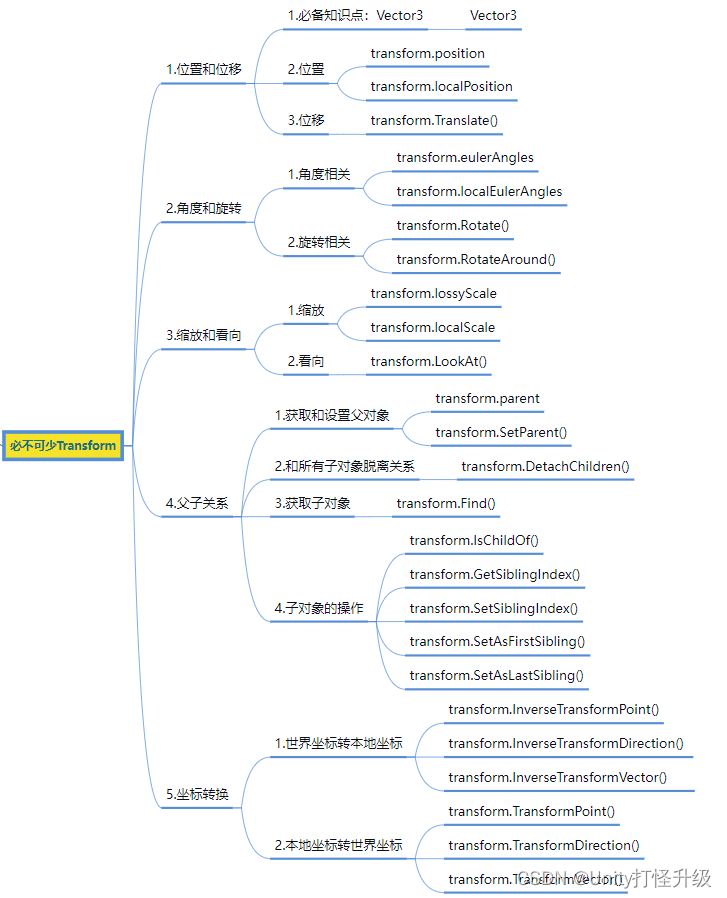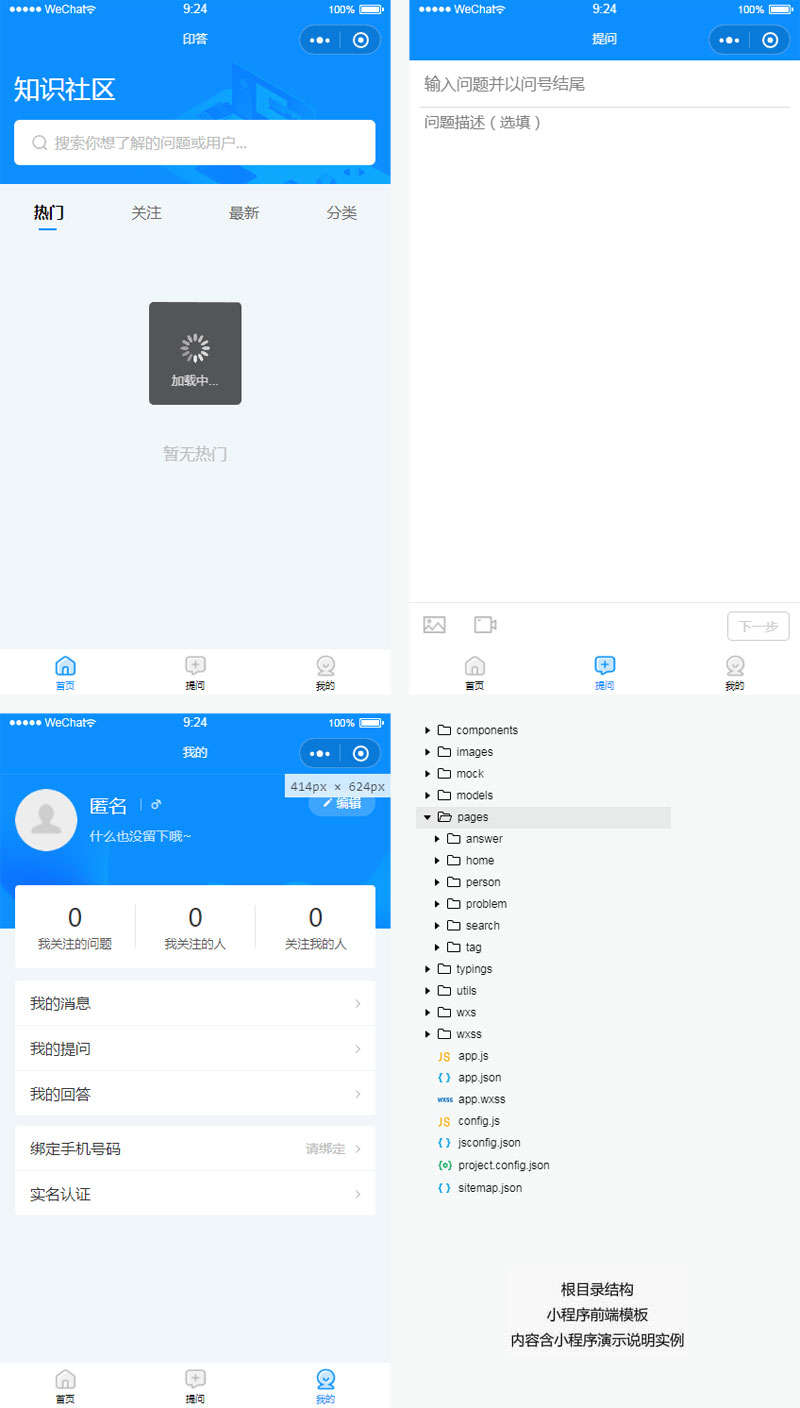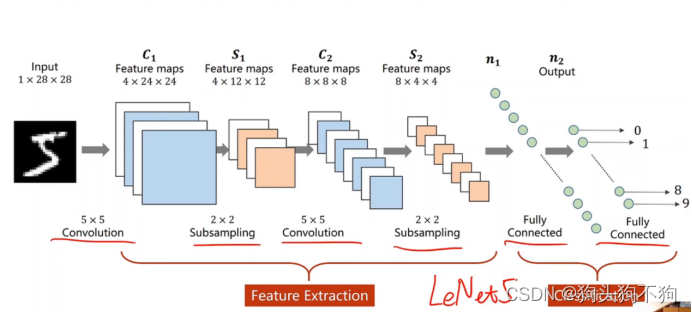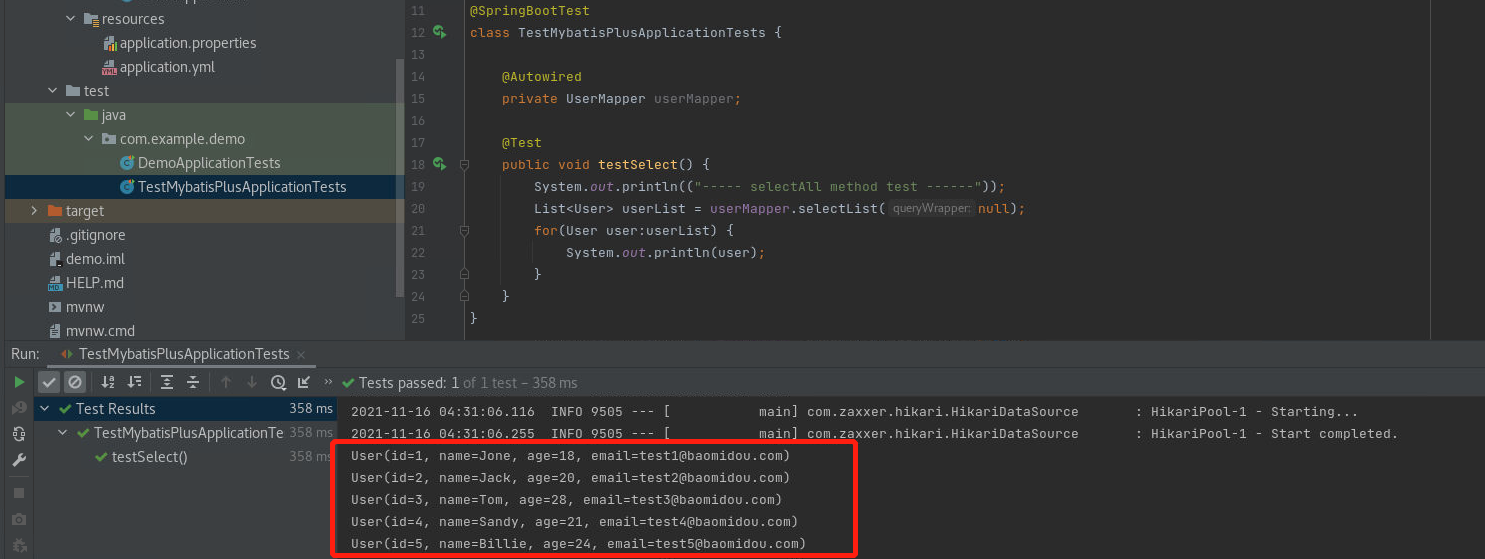双层神经网络


我们选用ReLU函数和softmax函数:

步骤:
1、LOSS损失函数(前向传播)与梯度(后向传播)计算
Forward: 计算score,再根据score计算loss
Backward:分别对W2、b2、W1、b1求梯度
def loss(self, X, y=None, reg=0.0):
# Unpack variables from the params dictionary
W1, b1 = self.params['W1'], self.params['b1']
W2, b2 = self.params['W2'], self.params['b2']
N, D = X.shape
# Compute the forward pass
scores = None
h1 = np.maximum(0, np.dot(X,W1) + b1) #(5,10)
scores = np.dot(h1,W2) + b2 # (5,3)
if y is None:
return scores
# Compute the loss
loss = None
exp_S = np.exp(scores) #(5,3)
sum_exp_S = np.sum(exp_S,axis = 1)
sum_exp_S = sum_exp_S.reshape(-1,1) #(5,1)
#print (sum_exp_S.shape)
loss = np.sum(-scores[range(N),list(y)]) + sum(np.log(sum_exp_S))
loss = loss / N + 0.5 * reg * np.sum(W1 * W1) + 0.5 * reg * np.sum(W2 * W2)
# Backward pass: compute gradients
grads = {}
#---------------------------------#
dscores = np.zeros(scores.shape)
dscores[range(N),list(y)] = -1
dscores += (exp_S/sum_exp_S) #(5,3)
dscores /= N
grads['W2'] = np.dot(h1.T, dscores)
grads['W2'] += reg * W2
grads['b2'] = np.sum(dscores, axis = 0)
#---------------------------------#
dh1 = np.dot(dscores, W2.T) #(5,10)
dh1_ReLU = (h1>0) * dh1
grads['W1'] = X.T.dot(dh1_ReLU) + reg * W1
grads['b1'] = np.sum(dh1_ReLU, axis = 0)
#---------------------------------#
return loss, grads
2、训练函数 (迭代过程:forward–>backward–>update–>forward–>backward->update……)
def train(self, X, y, X_val, y_val,
learning_rate=1e-3, learning_rate_decay=0.95,
reg=5e-6, num_iters=100,
batch_size=200, verbose=False):
num_train = X.shape[0]
iterations_per_epoch = max(num_train / batch_size, 1)
# Use SGD to optimize the parameters in self.model
loss_history = []
train_acc_history = []
val_acc_history = []
for it in xrange(num_iters):
X_batch = None
y_batch = None
mask = np.random.choice(num_train,batch_size,replace = True)
X_batch = X[mask]
y_batch = y[mask]
# Compute loss and gradients using the current minibatch
loss, grads = self.loss(X_batch, y=y_batch, reg=reg)
loss_history.append(loss)
self.params['W1'] += -learning_rate * grads['W1']
self.params['b1'] += -learning_rate * grads['b1']
self.params['W2'] += -learning_rate * grads['W2']
self.params['b2'] += -learning_rate * grads['b2']
if verbose and it % 100 == 0:
print('iteration %d / %d: loss %f' % (it, num_iters, loss))
# Every epoch, check train and val accuracy and decay learning rate.
if it % iterations_per_epoch == 0:
# Check accuracy
#print ('第%d个epoch' %it)
train_acc = (self.predict(X_batch) == y_batch).mean()
val_acc = (self.predict(X_val) == y_val).mean()
train_acc_history.append(train_acc)
val_acc_history.append(val_acc)
# Decay learning rate
learning_rate *= learning_rate_decay #减小学习率
return {
'loss_history': loss_history,
'train_acc_history': train_acc_history,
'val_acc_history': val_acc_history,
}
3、预测函数
4、参数训练
用于机器视觉识别的卷积神经网络
多层全连接神经网络
两个基本的layer:
def affine_forward(x, w, b):
out = None
N=x.shape[0]
x_new=x.reshape(N,-1)#转为二维向量
out=np.dot(x_new,w)+b
cache = (x, w, b) # 不需要保存out
return out, cache
def affine_backward(dout, cache):
x, w, b = cache
dx, dw, db = None, None, None
dx=np.dot(dout,w.T)
dx=np.reshape(dx,x.shape)
x_new=x.reshape(x.shape[0],-1)
dw=np.dot(x_new.T,dout)
db=np.sum(dout,axis=0,keepdims=True)
return dx, dw, db
def relu_forward(x):
out = None
out=np.maximum(0,x)
cache = x
return out, cache
def relu_backward(dout, cache):
dx, x = None, cache
return dx
构建一个Sandwich的层:
def affine_relu_forward(x, w, b):
a, fc_cache = affine_forward(x, w, b)
out, relu_cache = relu_forward(a)
cache = (fc_cache, relu_cache)
return out, cache
def affine_relu_backward(dout, cache):
fc_cache, relu_cache = cache
da = relu_backward(dout, relu_cache)
dx, dw, db = affine_backward(da, fc_cache)
return dx, dw, db
FullyConnectedNet:
class FullyConnectedNet(object):
def __init__(self, hidden_dims, input_dim=3*32*32, num_classes=10,
dropout=0, use_batchnorm=False, reg=0.0,
weight_scale=1e-2, dtype=np.float32, seed=None):
self.use_batchnorm = use_batchnorm
self.use_dropout = dropout > 0
self.reg = reg
self.num_layers = 1 + len(hidden_dims)
self.dtype = dtype
self.params = {}
layers_dims = [input_dim] + hidden_dims + [num_classes] #z这里存储的是每个layer的大小
for i in xrange(self.num_layers):
self.params['W' + str(i + 1)] = weight_scale * np.random.randn(layers_dims[i], layers_dims[i + 1])
self.params['b' + str(i + 1)] = np.zeros((1, layers_dims[i + 1]))
if self.use_batchnorm and i < len(hidden_dims):#最后一层是不需要batchnorm的
self.params['gamma' + str(i + 1)] = np.ones((1, layers_dims[i + 1]))
self.params['beta' + str(i + 1)] = np.zeros((1, layers_dims[i + 1]))
self.dropout_param = {}
if self.use_dropout:
self.dropout_param = {'mode': 'train', 'p': dropout}
if seed is not None:
self.dropout_param['seed'] = seed
self.bn_params = []
if self.use_batchnorm:
self.bn_params = [{'mode': 'train'} for i in xrange(self.num_layers - 1)]
# Cast all parameters to the correct datatype
for k, v in self.params.iteritems():
self.params[k] = v.astype(dtype)
def loss(self, X, y=None):
X = X.astype(self.dtype)
mode = 'test' if y is None else 'train'
if self.dropout_param is not None:
self.dropout_param['mode'] = mode
if self.use_batchnorm:
for bn_param in self.bn_params:
bn_param[mode] = mode
scores = None
h, cache1, cache2, cache3,cache4, bn, out = {}, {}, {}, {}, {}, {},{}
out[0] = X #存储每一层的out,按照逻辑,X就是out0[0]
# Forward pass: compute loss
for i in xrange(self.num_layers - 1):
# 得到每一层的参数
w, b = self.params['W' + str(i + 1)], self.params['b' + str(i + 1)]
if self.use_batchnorm:
gamma, beta = self.params['gamma' + str(i + 1)], self.params['beta' + str(i + 1)]
h[i], cache1[i] = affine_forward(out[i], w, b)
bn[i], cache2[i] = batchnorm_forward(h[i], gamma, beta, self.bn_params[i])
out[i + 1], cache3[i] = relu_forward(bn[i])
if self.use_dropout:
out[i+1], cache4[i] = dropout_forward(out[i+1] , self.dropout_param)
else:
out[i + 1], cache3[i] = affine_relu_forward(out[i], w, b)
if self.use_dropout:
out[i + 1], cache4[i] = dropout_forward(out[i + 1], self.dropout_param)
W, b = self.params['W' + str(self.num_layers)], self.params['b' + str(self.num_layers)]
scores, cache = affine_forward(out[self.num_layers - 1], W, b) #对最后一层进行计算
if mode == 'test':
return scores
loss, grads = 0.0, {}
data_loss, dscores = softmax_loss(scores, y)
reg_loss = 0
for i in xrange(self.num_layers):
reg_loss += 0.5 * self.reg * np.sum(self.params['W' + str(i + 1)] * self.params['W' + str(i + 1)])
loss = data_loss + reg_loss
# Backward pass: compute gradients
dout, dbn, dh, ddrop = {}, {}, {}, {}
t = self.num_layers - 1
dout[t], grads['W' + str(t + 1)], grads['b' + str(t + 1)] = affine_backward(dscores, cache)#这个cache就是上面得到的
for i in xrange(t):
if self.use_batchnorm:
if self.use_dropout:
dout[t - i] = dropout_backward(dout[t-i], cache4[t-1-i])
dbn[t - 1 - i] = relu_backward(dout[t - i], cache3[t - 1 - i])
dh[t - 1 - i], grads['gamma' + str(t - i)], grads['beta' + str(t - i)] = batchnorm_backward(dbn[t - 1 - i],cache2[t - 1 - i])
dout[t - 1 - i], grads['W' + str(t - i)], grads['b' + str(t - i)] = affine_backward(dh[t - 1 - i],cache1[t - 1 - i])
else:
if self.use_dropout:
dout[t - i] = dropout_backward(dout[t - i], cache4[t - 1 - i])
dout[t - 1 - i], grads['W' + str(t - i)], grads['b' + str(t - i)] = affine_relu_backward(dout[t - i],cache3[t - 1 - i])
# Add the regularization gradient contribution
for i in xrange(self.num_layers):
grads['W' + str(i + 1)] += self.reg * self.params['W' + str(i + 1)]
return loss, grads
使用slover来对神经网络进优化求解
之后进行参数更新:
- SGD
- Momentum
- Nestero
- RMSProp and Adam
批量规范化

BN层前向传播:

BN层反向传播:

def batchnorm_forward(x, gamma, beta, bn_param):
mode = bn_param['mode'] #因为train和test是两种不同的方法
eps = bn_param.get('eps', 1e-5)
momentum = bn_param.get('momentum', 0.9)
N, D = x.shape
running_mean = bn_param.get('running_mean', np.zeros(D, dtype=x.dtype))
running_var = bn_param.get('running_var', np.zeros(D, dtype=x.dtype))
out, cache = None, None
if mode == 'train':
sample_mean = np.mean(x, axis=0, keepdims=True) # [1,D]
sample_var = np.var(x, axis=0, keepdims=True) # [1,D]
x_normalized = (x - sample_mean) / np.sqrt(sample_var + eps) # [N,D]
out = gamma * x_normalized + beta
cache = (x_normalized, gamma, beta, sample_mean, sample_var, x, eps)
running_mean = momentum * running_mean + (1 - momentum) * sample_mean #通过moument得到最终的running_mean和running_var
running_var = momentum * running_var + (1 - momentum) * sample_var
elif mode == 'test':
x_normalized = (x - running_mean) / np.sqrt(running_var + eps) #test的时候如何通过BN层
out = gamma * x_normalized + beta
else:
raise ValueError('Invalid forward batchnorm mode "%s"' % mode)
# Store the updated running means back into bn_param
bn_param['running_mean'] = running_mean
bn_param['running_var'] = running_var
return out, cache
def batchnorm_backward(dout, cache):
dx, dgamma, dbeta = None, None, None
x_normalized, gamma, beta, sample_mean, sample_var, x, eps = cache
N, D = x.shape
dx_normalized = dout * gamma # [N,D]
x_mu = x - sample_mean # [N,D]
sample_std_inv = 1.0 / np.sqrt(sample_var + eps) # [1,D]
dsample_var = -0.5 * np.sum(dx_normalized * x_mu, axis=0, keepdims=True) * sample_std_inv**3
dsample_mean = -1.0 * np.sum(dx_normalized * sample_std_inv, axis=0, keepdims=True) - \
2.0 * dsample_var * np.mean(x_mu, axis=0, keepdims=True)
dx1 = dx_normalized * sample_std_inv
dx2 = 2.0/N * dsample_var * x_mu
dx = dx1 + dx2 + 1.0/N * dsample_mean
dgamma = np.sum(dout * x_normalized, axis=0, keepdims=True)
dbeta = np.sum(dout, axis=0, keepdims=True)
return dx, dgamma, dbeta
Batch Normalization解决的一个重要问题就是梯度饱和。
Dropout
训练的时候以一定的概率来去每层的神经元:

可以防止过拟合。还可以理解为dropout是一个正则化的操作,他在每次训练的时候,强行让一些feature为0,这样提高了网络的稀疏表达能力。
def dropout_forward(x, dropout_param):
p, mode = dropout_param['p'], dropout_param['mode']
if 'seed' in dropout_param:
np.random.seed(dropout_param['seed'])
mask = None
out = None
if mode == 'train':
mask = (np.random.rand(*x.shape) < p) / p #注意这里除以了一个P,这样在test的输出的时候,维持原样即可
out = x * mask
elif mode == 'test':
out = x
cache = (dropout_param, mask)
out = out.astype(x.dtype, copy=False)
return out, cache
def dropout_backward(dout, cache):
dropout_param, mask = cache
mode = dropout_param['mode']
dx = None
if mode == 'train':
dx = dout * mask
elif mode == 'test':
dx = dout
return dx
卷积神经网络
卷积层的前向传播与反向传播




def conv_forward_naive(x, w, b, conv_param):
stride, pad = conv_param['stride'], conv_param['pad']
N, C, H, W = x.shape
F, C, HH, WW = w.shape
x_padded = np.pad(x, ((0, 0), (0, 0), (pad, pad), (pad, pad)), mode='constant') #补零
H_new = 1 + (H + 2 * pad - HH) / stride
W_new = 1 + (W + 2 * pad - WW) / stride
s = stride
out = np.zeros((N, F, H_new, W_new))
for i in xrange(N): # ith image
for f in xrange(F): # fth filter
for j in xrange(H_new):
for k in xrange(W_new):
out[i, f, j, k] = np.sum(x_padded[i, :, j*s:HH+j*s, k*s:WW+k*s] * w[f]) + b[f]#对应位相乘
cache = (x, w, b, conv_param)
return out, cache
def conv_backward_naive(dout, cache):
x, w, b, conv_param = cache
pad = conv_param['pad']
stride = conv_param['stride']
F, C, HH, WW = w.shape
N, C, H, W = x.shape
H_new = 1 + (H + 2 * pad - HH) / stride
W_new = 1 + (W + 2 * pad - WW) / stride
dx = np.zeros_like(x)
dw = np.zeros_like(w)
db = np.zeros_like(b)
s = stride
x_padded = np.pad(x, ((0, 0), (0, 0), (pad, pad), (pad, pad)), 'constant')
dx_padded = np.pad(dx, ((0, 0), (0, 0), (pad, pad), (pad, pad)), 'constant')
for i in xrange(N): # ith image
for f in xrange(F): # fth filter
for j in xrange(H_new):
for k in xrange(W_new):
window = x_padded[i, :, j*s:HH+j*s, k*s:WW+k*s]
db[f] += dout[i, f, j, k]
dw[f] += window * dout[i, f, j, k]
dx_padded[i, :, j*s:HH+j*s, k*s:WW+k*s] += w[f] * dout[i, f, j, k]#上面的式子,关键就在于+号
# Unpad
dx = dx_padded[:, :, pad:pad+H, pad:pad+W]
return dx, dw, db
池化层
def max_pool_forward_naive(x, pool_param):
HH, WW = pool_param['pool_height'], pool_param['pool_width']
s = pool_param['stride']
N, C, H, W = x.shape
H_new = 1 + (H - HH) / s
W_new = 1 + (W - WW) / s
out = np.zeros((N, C, H_new, W_new))
for i in xrange(N):
for j in xrange(C):
for k in xrange(H_new):
for l in xrange(W_new):
window = x[i, j, k*s:HH+k*s, l*s:WW+l*s]
out[i, j, k, l] = np.max(window)
cache = (x, pool_param)
return out, cache
def max_pool_backward_naive(dout, cache):
x, pool_param = cache
HH, WW = pool_param['pool_height'], pool_param['pool_width']
s = pool_param['stride']
N, C, H, W = x.shape
H_new = 1 + (H - HH) / s
W_new = 1 + (W - WW) / s
dx = np.zeros_like(x)
for i in xrange(N):
for j in xrange(C):
for k in xrange(H_new):
for l in xrange(W_new):
window = x[i, j, k*s:HH+k*s, l*s:WW+l*s]
m = np.max(window) #获得之前的那个值,这样下面只要windows==m就能得到相应的位置
dx[i, j, k*s:HH+k*s, l*s:WW+l*s] = (window == m) * dout[i, j, k, l]
return dx



















